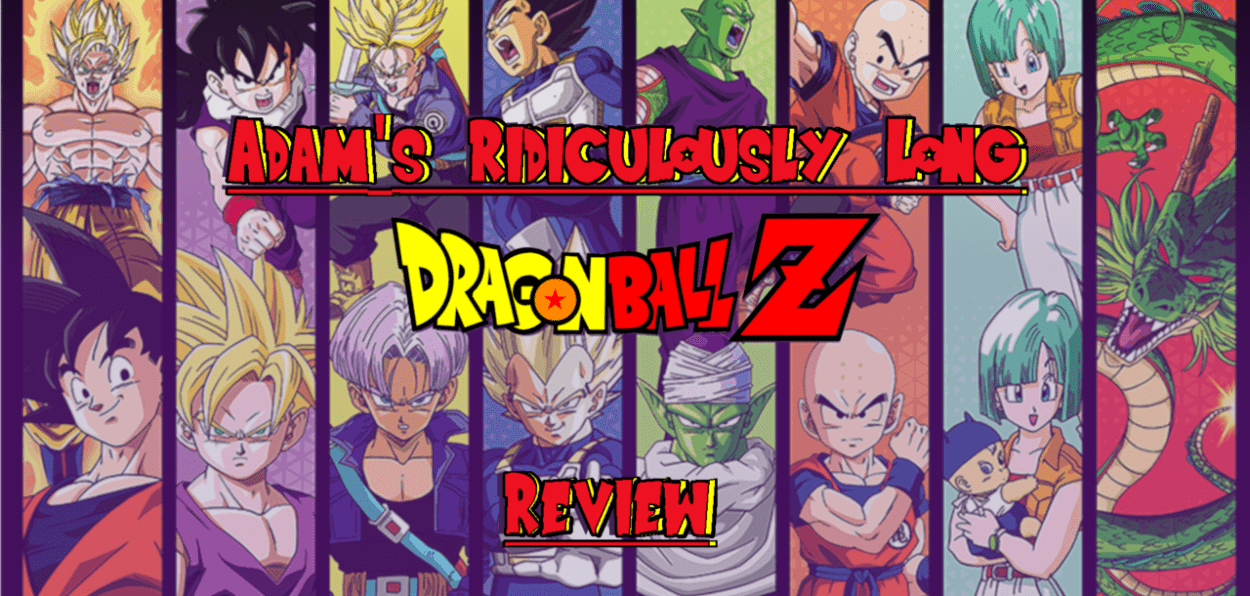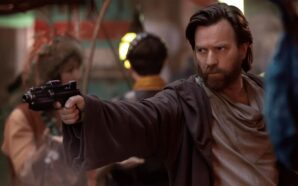How can you tell that you’ve spent too much money on something? It’s easy. When it arrives with a certificate of authenticity… I’ve never owned anything that has a certificate of authenticity before so it came as a bit of a surprise to be honest. It’s my own fault really, how could I forget that I didn’t just buy a set of Blu-Rays? I bought the Dragon Ball Z 30th Anniversary set complete with a Goku statue and other bonus materials, certificate included. Silly me. So, to justify that rather expensive purchase I’ve decided to write about its contents. In this article I’ll talk about the Blu-Rays themselves and in subsequent articles I’ll review each season of the show too, finishing up with some final thoughts at the end of my journey. Obviously this was my plan from the very beginning… clearly. The Dragon Ball Z 30th Anniversary Collection is significant for several reasons. The most obvious is that it is marking 30 years since its original airing in Japan starting in 1989; though it came to the “west” many years later as was the norm at the time. Less obvious are two features that only fans tend to think about, both of which are important in my view as well as being incredibly significant for very different reasons.
First, is the audio tracks. This edition comes with three options; the original Japanese broadcast edition in mono (with English subtitles), the original English broadcast version in stereo and a 5.1 English audio version with the Japanese score. “Why two English versions?” I’m glad you asked. In the late 90’s and early 2000’s Dragon Ball Z was a mess in terms of releases outside of Japan which I’m not going to go into great detail about – that is a series of articles in itself and there are people much better placed and informed to write those than I am. There were multiple English dubs done by various companies in different regions but eventually we’ve settled on two “definitive” versions (sorry Ocean dub fans) from Funimation. One, using the Japanese score which is the newest version. The second version is the one I remember fondly from my childhood of watching DBZ on Cartoon Network/Toonami, the Bruce Faulconer scored version. The two scores couldn’t be more different. The Japanese score by Shunsuke Kikuchi is muted, emotionally intelligent and isn’t afraid to be silent entirely when the moment calls for it. The score by Bruce Faulconer is more full on, multi-layered and almost never silent. Both are iconic and which you prefer is often based entirely on which you saw first rather than on any judgement call on their respective qualities. I saw the Bruce Faulconer version growing-up, so that’s the version my nostalgia is all wrapped up in and it’s the version I prefer.
As I’ve gotten older I’ve come to appreciate the craft behind compelling creations more and more. I’ve come to understand that, so very often, less is more. Sometimes the best thing to do is nothing at all, rather than something for the sake of it. I appreciate the craft of the Japanese score, the silences and quiet moments are incredibly fitting and powerful. More than that, I like it. Where the Faulconer score surpasses it, for me, is when the action gets going. Faulconer put together tracks with themes, for characters and attacks as well as places. Iconic moments like Vegeta’s Final Flash, charging the Spirit Bomb on Namek or Gohan’s Rage, each of them has a track, or a combination of tracks, that goes with them that matches or even elevates their inherent epicness. Those scenes just aren’t the same without them. That’s not to say that Kikuchi’s score isn’t capable of elevating those scenes, of course it is, it’s just simply that it doesn’t do so for me. So while the Faulconer score isn’t crafted with that less is more philosophy that works so well – the philosophy I generally subscribe to – it’s the score I still prefer. Call me blinded by nostalgia all you want, I won’t deny it, but you won’t change my mind either.
The other incredibly significant feature is the aspect ratio. The original series aired in 4:3 but many subsequent Home Releases were in 16:9 wide-screen. They achieved this by cropping and zooming the original image. This means that parts of the original image are then missing, it looks a little odd and frankly, it’s a terrible vandalism; though that was obviously not the intention. There was a time where changing things from their original ratio into wide-screen was an obsession and I don’t know why. Looking back now it looks incredibly short-sighted and foolish but that is a separate conversation in its own right. The good news is that the 30th Anniversary Blu-Rays are in 4:3. It was feared that they would just crop the 16:9 version back into 4:3 – which would be even worse than leaving it in 16:9 – but those fears have proven to be unfounded. Instead they’ve rescanned the original film reels and remastered those into HD so you get as close to the original version as possible. It even has film grain (which was removed in some releases) for that authentic feel!
As far as I’m aware this is the first time that it has been possible (in the UK at least) to watch Dragon Ball Z in 4:3 with the Faulconer score; unless you still have VCR tapes from when it aired. Even the versions available to stream (thanks VPNs) are in 16:9 and usually have the Japanese score by Kikuchi. The “Orange Box” DVD sets have the Faulconer score as an option but are also 16:9. Basically, this is the best version of the series available now, anywhere, regardless of which version of the audio you prefer. It’s the best quality and the most visually authentic way to watch it. Unfortunately, the 30th Anniversary Edition is a limited edition so, while some were still available, they won’t be available forever. The good news, however, is that Manga UK are releasing the same remastered version as individual seasons, so do check those out as they are released if dropping the lump sum on the whole set isn’t something you can afford or they are no longer available as may well be the case over a year on.
Check back next week for my review of Season One! And don’t forget that you too can buy the same Blu-Ray’s I’m watching as individual seasons from Manga UK.








